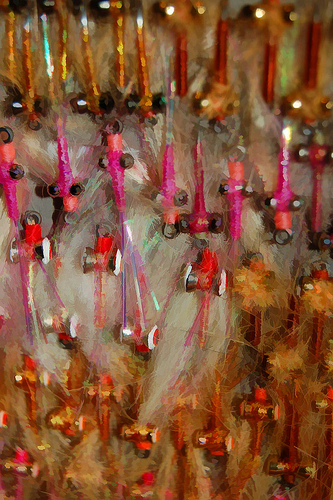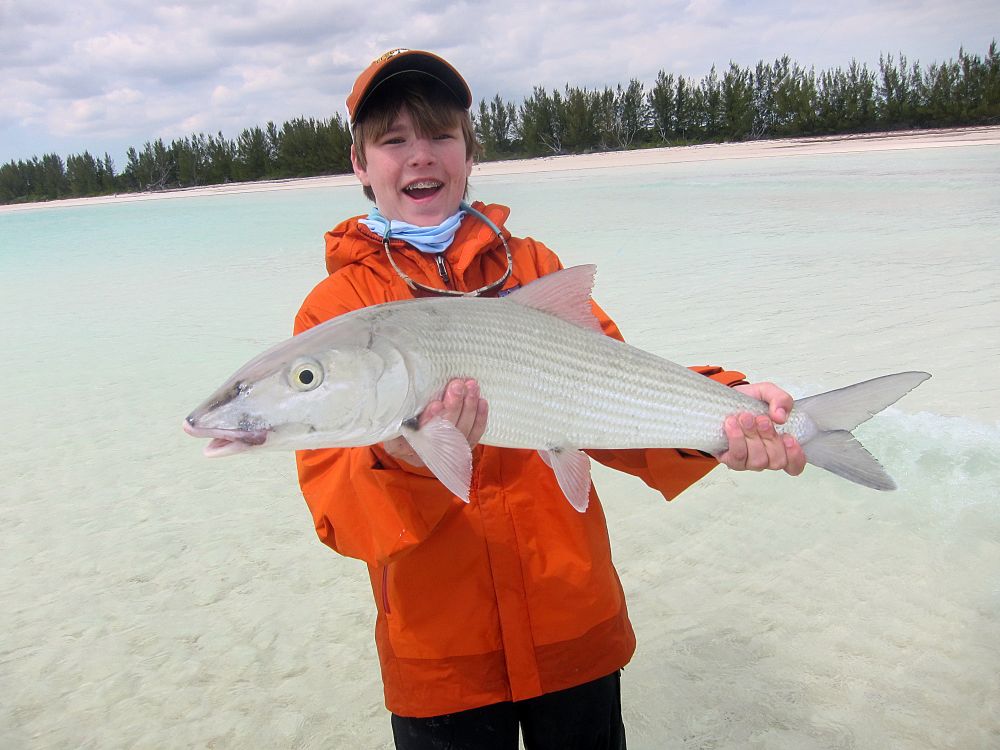 El Guapo | Comments Off |
El Guapo | Comments Off |  bonefish,
bonefish,  fish video,
fish video,  skinny water culture in
skinny water culture in  Film and Video
Film and Video  Monday, March 18, 2013 at 12:01AM
Monday, March 18, 2013 at 12:01AM 
Just as flies for other species suggest various food forms appropriate for attracting those quarry, so bonefish flies portray the creatures eaten by Albula vulpes. However fly patterns for this elusive species must accomplish a few other critical tasks besides just looking like dinner.
LINK (via: Frankenfly)
 bonefish,
bonefish,  dick brown,
dick brown,  flies,
flies,  fly fishing books,
fly fishing books,  fly tying in
fly tying in  Books
Books  Monday, March 11, 2013 at 12:01AM
Monday, March 11, 2013 at 12:01AM 
Fritz Van Winkle is 11 years old and this was his first bonefishing trip.....
......Fritz might want to quit while he's ahead.
Caught with guide Kevin Reid at H2oBonefishing.
What a way to start your flats fishing obsession.....with apologies to the good Doctor Danylchuk.
 Tuesday, March 5, 2013 at 12:00AM
Tuesday, March 5, 2013 at 12:00AM Michael Larkin explains why Islamorada is the Bonefish Capital of the world.
 bonefish,
bonefish,  fish science,
fish science,  fish video in
fish video in  Film and Video
Film and Video  Monday, February 25, 2013 at 12:04AM
Monday, February 25, 2013 at 12:04AM  Can you see me now?
Can you see me now?
Recent research by Christopher Haak, a PhD student in Andy Danylchuk's Fish Ecology Lab at UMass Amherst (and funded by Bonefish and Tarpon Trust), may have finally answered this question.
Juvenile bonefish (as small as an inch long!) may in fact be “hiding in plain sight”, mixing in among schools of similar-sized mojarras, whom they closely resemble when young. With roughly 1 bonefish for every 50 mojarras, the odds are you won’t see the bonefish, and neither will their predators! In the photo above, a 2-inch long bonefish (about 4 months old) feeds among mojarras.
 Monday, February 18, 2013 at 12:07AM
Monday, February 18, 2013 at 12:07AM 
THE PROJECT
Culebra, a small island to the east of Puerto Rico, is notorious among seasoned anglers for its unusually large bonefish. However anecdotal evidence suggests that bonefish populations inhabiting relatively small, isolated, reef flats such as those found on Culebra may be particularly vulnerable to human-induced disturbances such as illegal gill netting and habitat loss.
To learn about their potential vulnerability, an international team of researchers launched a multi-year study examining the movement patterns of bonefish in Culebra. In the summer of 2012 we began by creating a research infrastructure in Culebra, and deployed an array of nearly 50 acoustic receivers (listening stations) encompassing the entire island, allowing us to detect tagged bonefish and follow their movements at scales as small as a few yards!
After months of testing and fine-tuning, we deployed an initial batch of tagged bonefish and the preliminary data is amazing. Based on this test of the array, we planned to surgically implant transmitter tags into 30 bonefish in the spring of 2013, collecting data on their movements well into 2015!
THE PROBLEM
Due to spending cutbacks by the U.S. federal government, the grant that made this work possible has been cut by half. This means we can barely afford to maintain our infrastructure and network of listening stations, and most importantly, that we can no longer afford to purchase and deploy 30 transmitter tags this spring as planned. In other words, 30 bonefish will be swimming around our extensive array of listening stations in Culebra without any transmitter tags in them, providing us with NO DATA!
HOW YOU CAN HELP
Adopt a Culebra Bonefish! We need to raise $19,500 for 30 transmitters to implant in bonefish, with purchase and deployment of each tag costing $650. Please consider Adopting a Bonefish as part of this project. As a thank-you, we will name the bonefish tagged in your honor, and you’ll receive a thank-you packet, including a photograph of the bonefish and its personal details, (length, weight, sex when known), as well as bi-yearly updates on their fish’s status!
Don’t let Culebra’s bonefish go another season without providing us with valuable information about how to conserve them! Adopt a Culebra bonefish now!
Time is of the essence!
Contact Dr. Andy Danylchuk (danylchuk@eco.umass.edu) to adopt your bonefish today.
 andy danylchuk,
andy danylchuk,  bonefish,
bonefish,  culebra,
culebra,  fish science in
fish science in  Conservation,
Conservation,  Environment,
Environment,  Species
Species